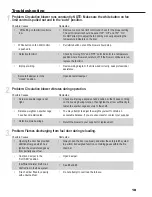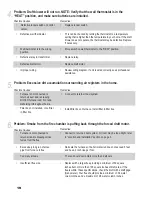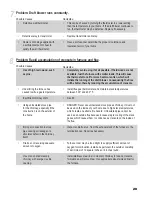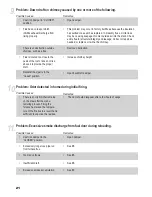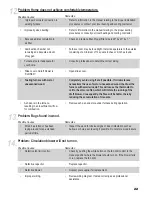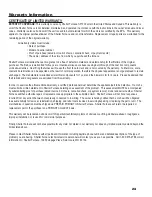
because if the ash pan is allowed to remain inside the furnace during operation, it will become dangerously hot to touch, block
the flow of air under the grates and reduce the efficiency of the furnace.
Remove the ashes from your Shelter Furnace at least once a day, or as often as necessary to ensure the ashes do not
accumulate to the height of the grates. If ash build-up occurs at grate level, it will cause premature failure of the grate system, voiding
the warranty on the grates. Unacceptably high temperatures will result because the ashes have restricted the flow of cooling air beneath
the grates. This flow of air was designed to not only cool the grates, but to also provide warmed air for better combustion. If the ash
level is improperly maintained the firebox will be starved of combustion air, greatly reducing the efficiency and heat output of
your Shelter Furnace.
CAUTION: HOT SURFACES. KEEP CHILDREN AWAY. DO NOT TOUCH DURING OPERATION.
IMPORTANT: FOR TECHNICAL SUPPORT OR CUSTOMER SERVICE
ISSUES, DO NOT RETURN TO THE STORE (THE STORE DOES NOT HAVE
REPLACEMENT PARTS), CALL 1-800-875-4788.
Draft Blower:
The draft blower plays an important role in the operation of your Shelter Furnace. When the wall thermostat calls for heat, the draft motor
turns on and supplies fresh air into the firebox producing a hotter fire, which in turns provides more heat in the heat chamber. The heat
is then sent through the duct system throughout your home. When the wall thermostat temperature is met, the draft blower shuts off until
the thermostat calls for heat, beginning the cycle again. The draft blower has a slide cover located on the side of the motor that is factory
preset, with an opening of approximately 3/8”. The cover should be fully closed only when there is a power failure and electricity is
lost. With the cover closed, no air is introduced into the firebox, then the fire dies, preventing the furnace from possible overheating and
damage.
Creosote Formation and Need for Removal:
When wood is burned slowly, it produces compounds in exhaust smoke which combine with expelled moisture to form
creosote. The creosote vapors condense in the relatively cooled chimney flue of a slow burning fire. As a result, creosote
residue accumulates on the flue lining. When ignited, this creosote makes an extremely dangerous fire in the chimney. The chimney
connector and the chimney should be inspected at least twice monthly during the heating season to determine if a creosote build-up has
occurred. If creosote has accumulated it should be removed to reduce risk of a chimney fire.
Creosote Prevention:
To help reduce the formation of creosote within the flue, ALWAYS BURN DRY, SEASONED WOOD. Dry wood burns hotter,
allowing flue gases to maintain temperatures above 212°F which should reduce the quantity of creosote in the chimney. If the
flue gas temperature falls below 212°F, condensation occurs causing creosote formation and accumulation within the chimney.
As an added precaution, periodic chimney inspections are recommended during the heating season to determine if creosote formation
has occurred. For safety and efficiency, it is recommended that the chimney system be inspected and cleaned prior to each heating
season.
Chimney Fire Warning:
In the event of a chimney fire, take the following actions immediately:
• Activate and toss a Chimfex™ Dry Chemical Chimney Fire Extinguisher into the firebox.
• Close the ash door, fuel door and slide cover on the draft motor.
• Alert entire household and prepare to evacuate if necessary.
• Call your local fire department.
Power Failure:
In case of power failure, to prevent your Shelter Furnace from over-heating and causing damage to the electrical components, do NOT
add more fuel to the firebox.
There is no warranty on electrical components damaged due to power failure.
8
8
8
13
Содержание Shelter Furnace SF1000
Страница 2: ...This Page Intentionally Blank...
Страница 26: ...This Page Intentionally Blank 23...
Страница 28: ...This Page Intentionally Blank...




















